Top Six New Archaeological Discoveries in China 2013 Announced--“New Archaeological Discoveries in China 2013” Archaeology Forum held in Beijing
From:Chinese Archaeology NetWriter:Date:2013-12-27
The eye-catching annual “New Archaeological Discoveries in China” Archaeology Forum sponsored by the Chinese Academy of Social Sciences (CASS) and organized by the Institute of Archaeology of CASS and Archaeology Press was held in Beijing on December 27th, 2013. More than 200 audiences joined the event, including the head of National Administration of Cultural Heritage, the head of CASS, archaeologists, scholars and graduate students from different institutions, museums and universities and journalists from different media.

Professor Shi Jinsong, head of the Archaeology Press, presided over the forum. Professor Wang Wei, head of the Institute of Archaeology CASS announced the six selected important archaeological discoveries: the Xichengyi site in Zhangye City, Gansu Province; the Wenfengta cemetery of the Eastern Zhou Dynasty in Suizhou, Hubei Province,; the mausoleum yard of the Qinshihuang (the first Emperor ); the Laoguanshan cemetery of the Han Dynasty ,Sichuan Province; the ancient bridges on the Wei River, Xi’an; and the tomb of the Yangdi Emperor of the Sui Dynasty, Yangzhou. Then, archaeologists directing these excavations each gave a 30 minutes presentation of their discoveries. Six guest archaeologists gave comments and organized discussions after each presentation.
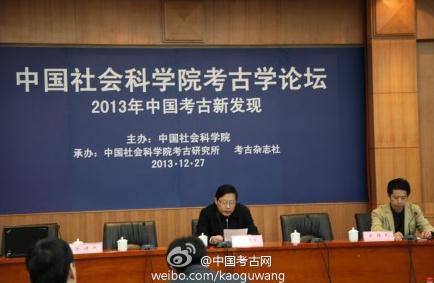
The Xichengyi site is a settlement of the late Machang culture and the Siba culture (4100 to 3600 BP) with remains of early bronze making activities. Within the 1350 square meter exposed area, were found 10 semi-subterranean houses, 38 wooden post houses, and 42 houses built with adobes, together with a large number of artifacts including pottery, stone tools, bone tools, bronze objects and jade ornaments. Children burials were found in some houses. The about 40 bronze objects, such as the knife, the ring and bubble like objects, are all small in size. Slag, ore, fragments of the furnace, blast pipe and stone mold were also discovered. The site is important for the research of early bronze making industry in the Hexi Corridor area. The mirror mould and bronze ram-head knife are especially vital for the exploration of early communication between the Hexi Corridor and the west.
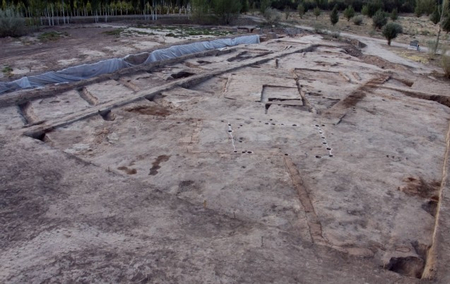

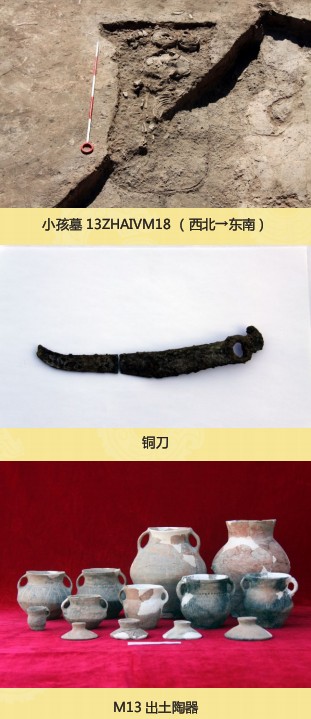
The Wenfengta cemetery is the burial ground of the Zeng State of the Eastern Zhou Dynasty. By present, about 70 burials had been discovered, together with more than 1000 pieces (sets) of burial offerings including bronze ding tripods, fu vessels, gui vessels, pots, fou vessels, yan vessels, jian basins, plates, and yi vessels, some of which with the inscription of Zeng, Zengzi, and Zenggongzi. Two chariot pits were also found. These discoveries are important for the research on the history of the Zeng State.
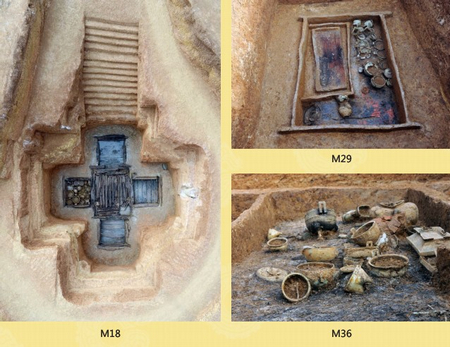

The excavations in the mausoleum yard of the Qinshihuang exposed a pit (K9901) with about 2000 pieces (sets) of terracotta warriors, bronze objects, stone tools and lead objects. A large building complex 692 m long from south to north with rooms and corridors were also discovered. Some rooms had murals which had never been found before. An excavation had been conducted in the northern part of the famous Terracotta Warriors Pit No.1, during which 55 new terracotta warriors were unearthed.
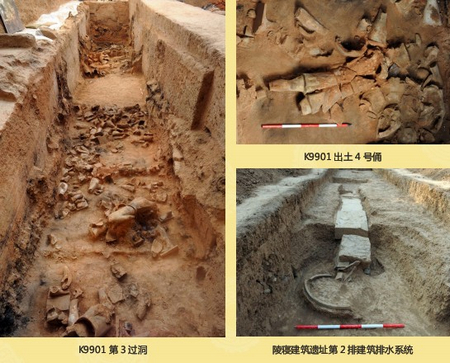
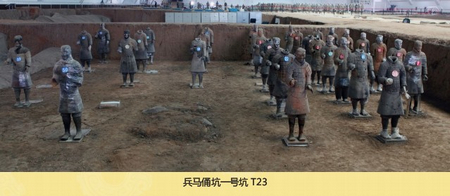
In the Han Dynasty Laoguanshan cemetery, archaeologists unearthed four burials with a large number of lacquer objects and pottery, and some bronze objects, jade objects and iron objects. The medical books on bamboo slips in burial M1, a human figurine with acupuncture points in burials M3 and a bamboo model of a loom in burial M2 are rare and very valuable discoveries.
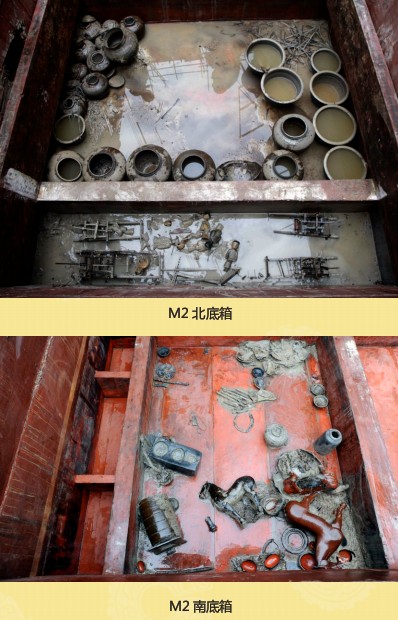
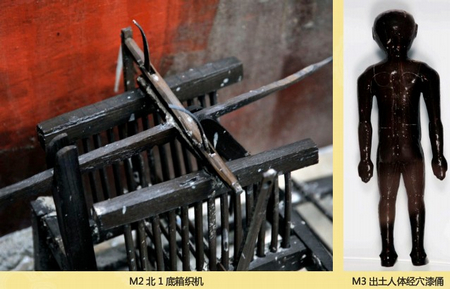
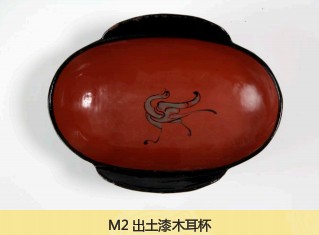
Seven ancient bridges were found on the Wei River during the excavation by the Shannxi Provincial Institute of Archaeology, the Institute of Archaeology CASS and the Xi’an City Institute of Cultural Heritage Preservation. The bridge No.1 outside the Chuchengmen gate of the Han capital city Chang’an is more than 880 m in length. Carbon dating dates of the wooden posts of the bridge are between 380 BC to 330 AD. These discoveries are important not only for the research of early bridge building history, but also for the reconstruction of river courses change of the Wei River.
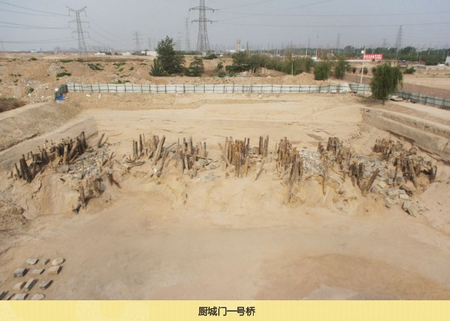
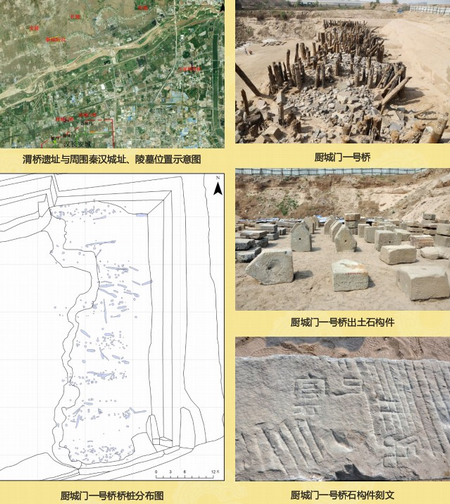
Tomb of the Yangdi Emperor of the Sui Dynasty is a large earth mound 49 m long from east to west and 48 m wide from south to north. Under the mound, two burials were discovered. A stone memorial tablet with the inscription “Sui gu Yangdi (pasted Yangdi Emperor of the Sui Dynasty)” was found in burial M1. The burial is 19.5 m in length, 5.9 to 6.42 m in width and consists of a passage, a doorway, the eastern side room, the western side room and the main chamber. The nearly 200 pieces (sets) of burials offerings include a finely made diexie belt, indicating the high status of the deceased. The female deceased in burial M2 under the same mound might be the queen of Yangdi emperor. These discoveries provide important details of the mysterious death of the emperor.
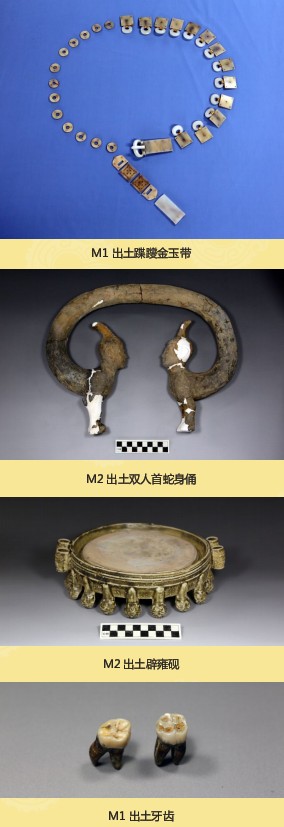
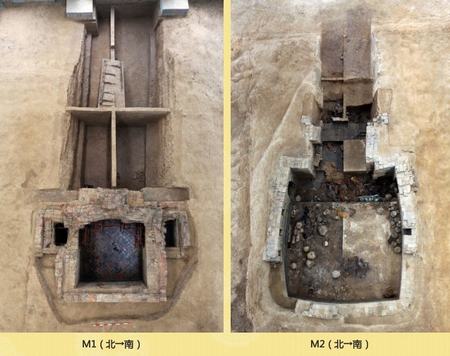
The forum started in 2002 aims to promote the development of Chinese archaeology, and now has been the most important platform of latest archaeological discoveries in China and academic communication

